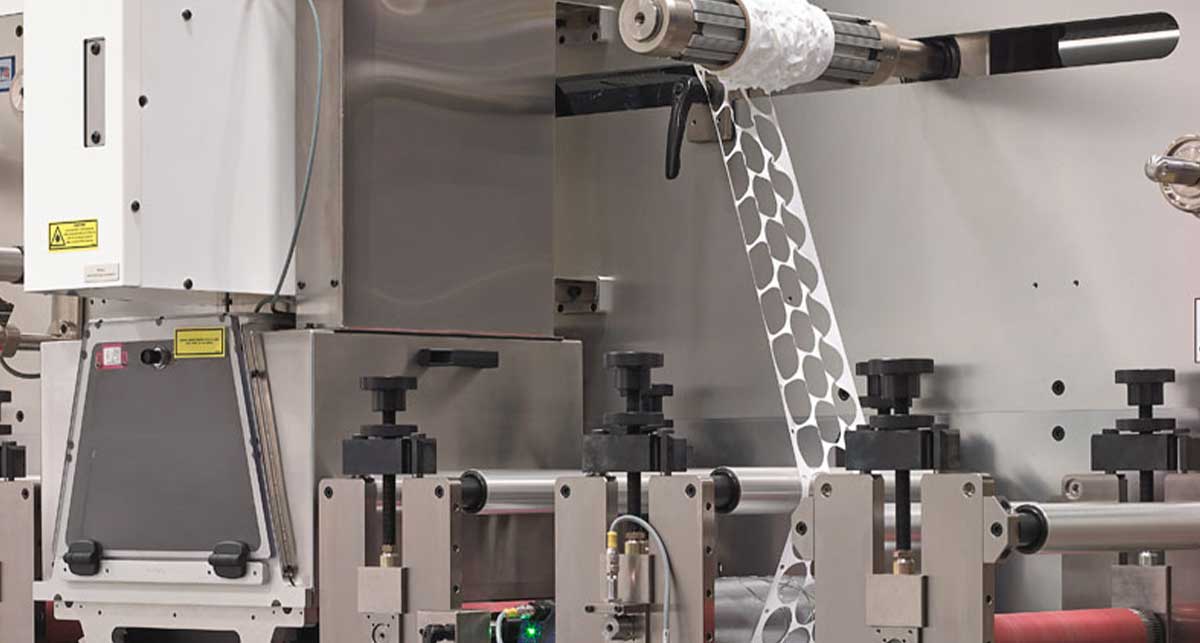Let’s be real- choosing the most expensive, durable option doesn't always make sense.
Think of it like buying a pleather jacket. You might buy one to try it out, but if the faux leather doesn’t suit your needs, you won’t lose the financial investment of real leather (which is more durable yet expensive).
Strouse has spent over thirty-seven years optimizing die cutting methods for custom projects. If flexible die tools are a better fit for our customers, rest assured that we’ll recommend them.
However, you might wonder: What are flex tools, and when should I use them? This article should help you understand more about the tooling side of your die cut production process.
What is a Flexible Die?
Flexible die tools are a cheaper tooling alternative for die cutting services. They are metal plates with extruded blades that attach to flat bed die machines or wrap around cylindrical magnets for rotary die cutting.
Flexible die tools are ideal for projects involving thin materials (such as labels), prototype parts (for design changes), and lower volumes. Cutting paper or thin film labels to paper or film liners is a common way to use flex dies.
How Does a Flexible Die Compare to a Regular Die?
- Cheaper — Flexible dies may use lower-quality steel than regular dies, which can contribute to their lower cost. They also use far less steel than a solid die because they’re a single sheet.
- Accurate cuts — They can achieve slightly tighter features than steel rule dies.
- Less durable — Flex dies are built differently and created using different materials from regular dies, which are made of high-quality steel.
- Shorter lifespan — Because their lifespan is shorter than regular die tools, flexible tools aren’t ideal for long runs of large quantities.
- No re-tools — Die makers often don’t offer re-tooling for flexible dies.
Why Choose Flexible Die Tools?
There are pros and cons to using flexible dies, so what are the reasons or scenarios for using them?
1) AFFORDABLE COST
One of the most significant benefits of using flexible die tools is the cost advantage over standard dies. Rather than costing thousands, flexible dies are more affordable, costing in the hundreds.
For example, a standard die worth $1,000 might have a flexible die counterpart costing only $100.
2) ABILITY TO GO ON PRESS QUICKLY
Die tools are custom-made, meaning tooling lead times might be longer than you’d expect, depending on your design. Flex tools can have shorter tooling lead times from the die tool manufacturer, which eliminates one of the potential causes of longer lead times.
3) IDEAL FOR SMALL RUNS
Flexible die tools are an excellent choice for small runs like die cut trials due to their shorter lifespan.
“I only run 200 of these high-profile parts per month/year,” is the exact type of conversation that might make a converter suggest flex tooling. If you’re ordering less than 1,000 parts per order, flexible dies might be the right choice.
4) THIN MATERIALS
If you’re cutting thin materials, flexible die tools can get the job done. At Strouse, the general rule is that a material or total material stack up of less than 15 mil thickness might warrant a flex tool if the desired part quantity and other project factors align.
Flex tools are made through chemical engraving, which is partially why these tools are too shallow to cut thicker materials. In addition, thick blades can’t physically flex around a cylinder or die efficiently.
Should I Use Flexible Tooling?
Now that you know more about flexible die tools, it’s time to reach out to a converter and determine whether a flex tool sounds right for your project.
You can reach out above for a design and project consultation, or if you’re looking for more information on die cutting, you can find it in our Learning Center.







